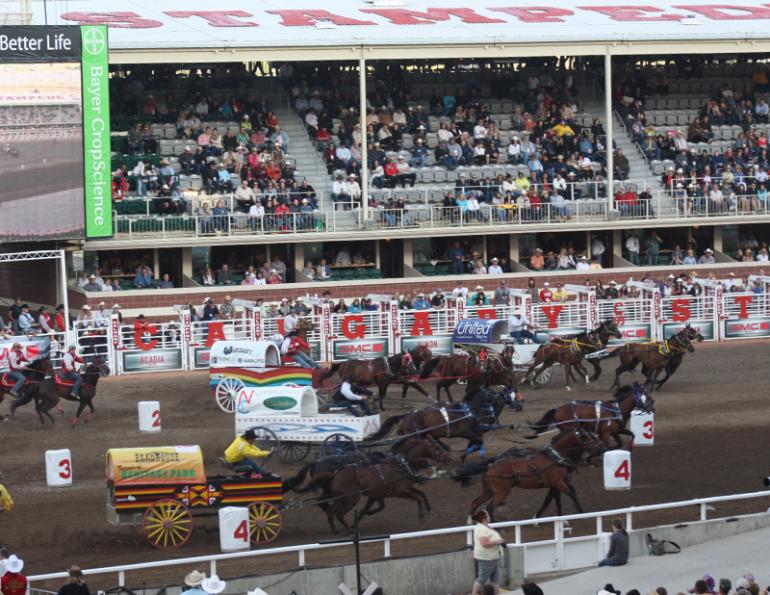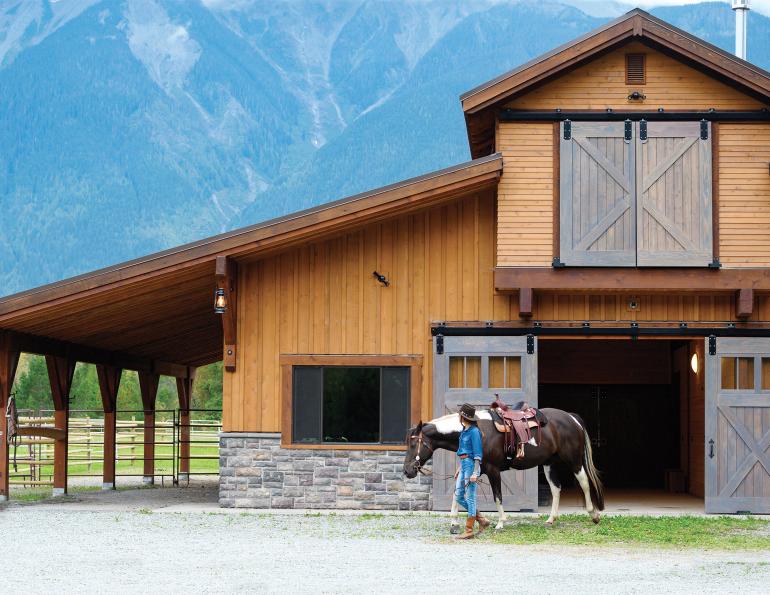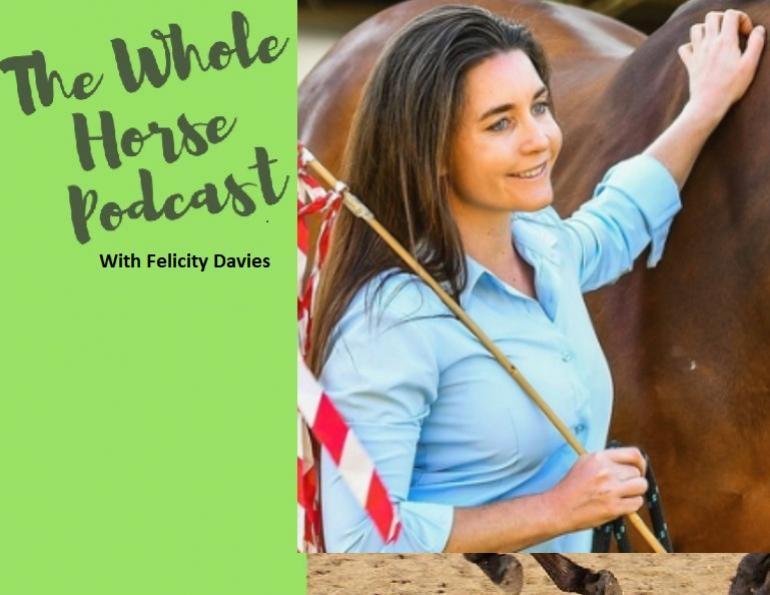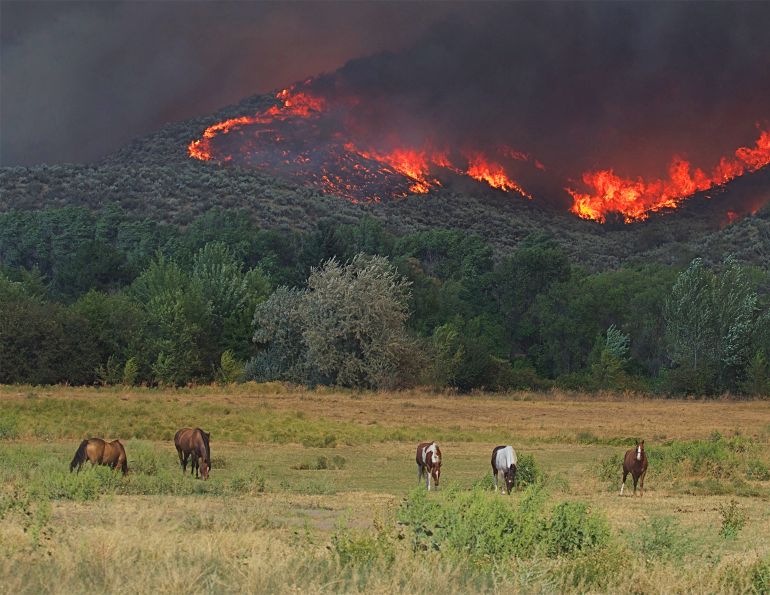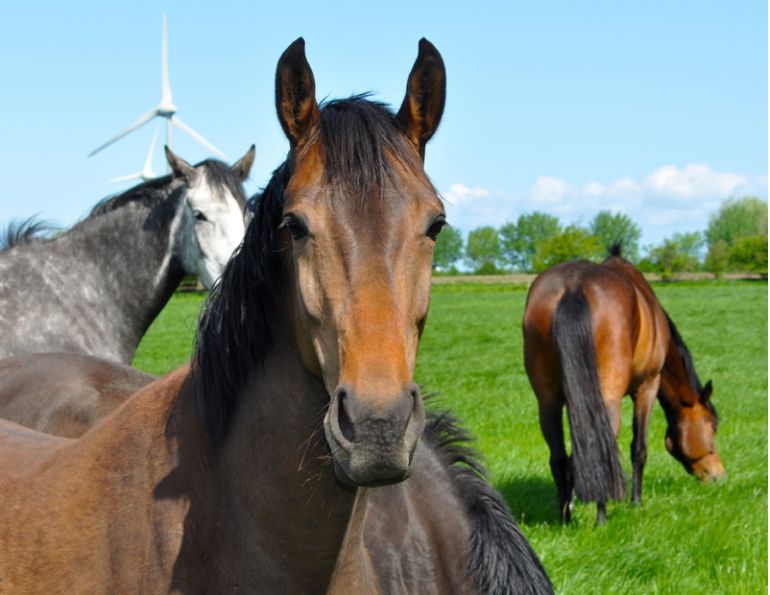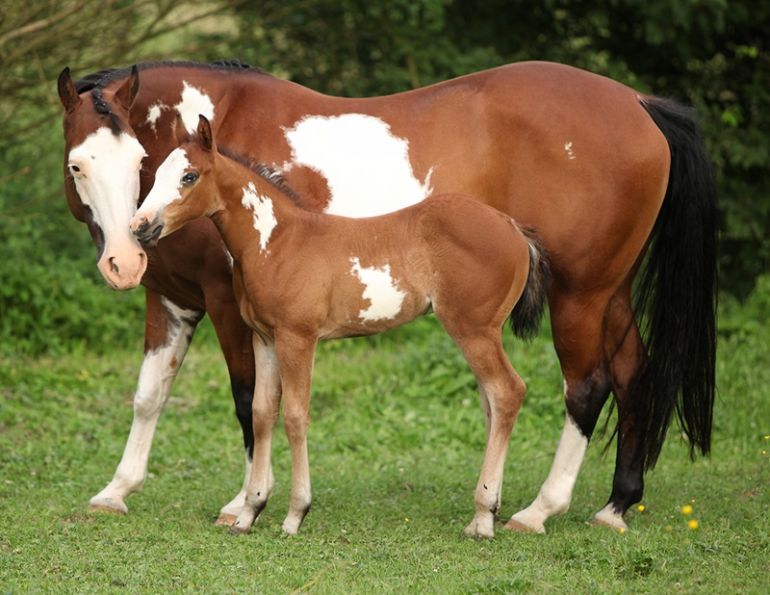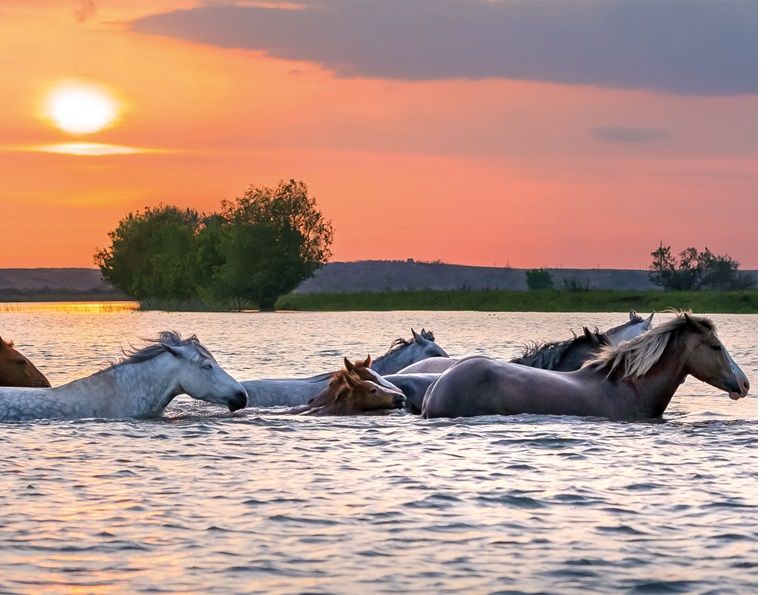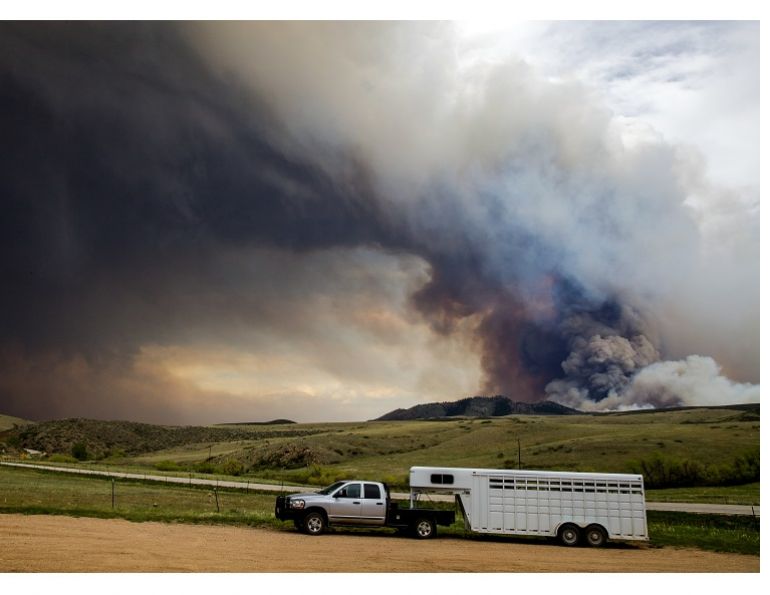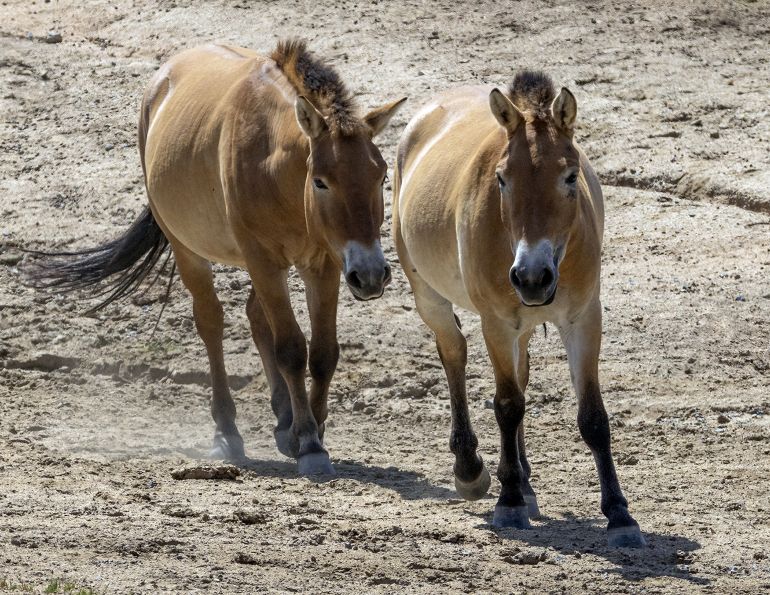By Margaret Evans
Few equestrian sports fuel as much drama and controversy as the chuckwagon races at the Calgary Stampede, and this year was no exception. During the GMC Rangeland Derby Chuckwagon Races, which ran in nine heats of four chuckwagons per heat each night from July 5 to 14, 2019, six horses died and several were injured over the ten days of racing that sparked critical and heated backlash from the public.
According to the Calgary Stampede media release, on Monday July 8, a chuckwagon horse fell going around the second turn and required veterinary care mid-race due to a serious internal medical condition. The 14-year-old gelding that belonged to Troy Dorchester ultimately died and a post-mortem is underway to find the exact cause of the problem. Like all the horses entered in Stampede competitions, it had received a thorough veterinary examination prior to racing.
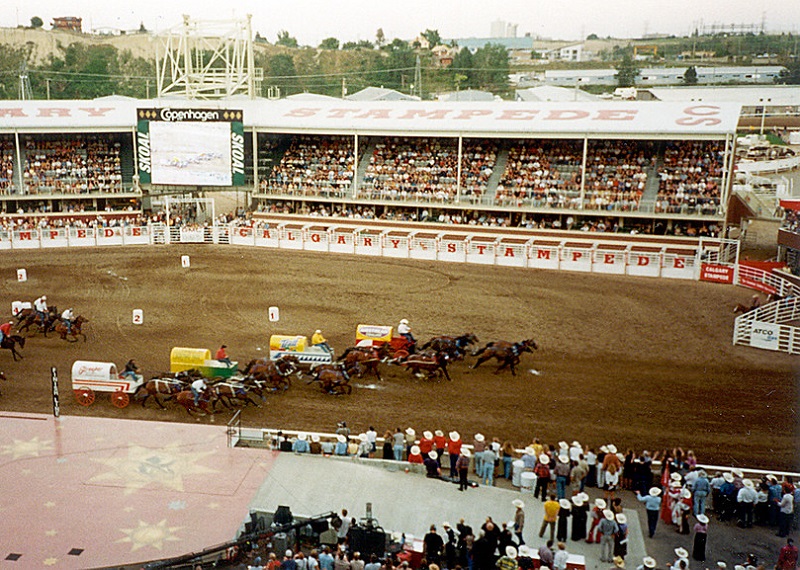
Photo: Creative Commons/Buck82
On July 10, during the second heat of the chuckwagon races, a horse on the wagon of Obrey Motowylo sustained an injury that proved to be a fractured left front radius. The injury resulted in the horse being euthanized. It did not appear that the horse had come into contact with any other wagons or horses.
Then the next day, July 11, a fatal accident occurred that was clearly driver error. In the seventh heat, driver Chad Harden obstructed the wagon of another driver which, in a domino effect, caused a third wagon to collide with the inner rail of the racetrack. That collision resulted in the death of a horse belonging to driver Evan Salmond. Following a review by the independent Chuckwagon Safety Commission, Harden was disqualified from racing for the remainder of the 2019 Calgary Stampede and fined $10,000. That disqualification means he will not be invited to compete in the future.
On the final day of the Stampede, Sunday July 14, the right lead horse on Evan Salmond’s wagon sustained a running injury and an immediate veterinary assessment determined that the horse had a fractured left hind cannon bone. To compound the tragedy, the collapse of the horse resulted in two other horses on the wagon team also sustaining serious injuries. Despite emergency care, all three horses were euthanized on the track. Salmond lost a total of four horses at this year’s Stampede.
This traumatic week of horse deaths in chuckwagon racing at the Calgary Stampede has raised the question of not only levels of safety and horse fitness, but the relevance of a high speed, high risk equestrian sport with an unacceptable track record of equine fatalities.
Given all the split-second variables, can the race ever be structured as acceptably safe? Is it time to put an end to chuckwagon racing at the Calgary Stampede and put the event, along with the horses, out to pasture?
“We have a zero-tolerance policy for preventable accidents and injuries,” says Warren Connell, chief executive officer with the Calgary Stampede. “Seeing injuries despite best and safe conditions is hard. Knowing an injury is preventable is much harder.”
The Chuckwagon Safety Commission, which was established 12 years ago as an independent body, has the authority to enforce the code of conduct for chuckwagon participants and to act as an appeal and review body with respect to interference infractions that happen in races.
“The Calgary Stampede and the Safety Commission have been preaching for a number of years that drivers consider how they drive on the track and that they consider safety factors as being paramount,” says Mike Whittle, chairman.
But for all the preaching, split second bad judgment calls as well as catastrophic injuries happen, resulting in tragic loss of horses. The public kickback is harsh, critical and heated. Six horse deaths in 10 days of racing is unacceptable by anyone’s standard. While the majority of people call for drastic changes to enforce safety for the animals, animal activists call for a complete ban of the sport.
Racing supporters have their own pushback hinging on history, heritage and excitement. Chuckwagon racing has a long history with the Stampede. The first races were held at the 1923 Calgary Stampede. Guy Weadick, who founded the Stampede 11 years previously, invited ranchers to enter their chuckwagons and crews in races for a total of $275 in prize money. This year, 36 chuckwagon drivers, their outriders, and 216 horses raced for $1.45 million in prize money at the GMC Rangeland Derby.
The sport draws big money and big crowds. In addition, chuckwagon sponsorship auctions put corporate names on the tarps of high profile chuckwagons driven by notable drivers. Big money gives businesses high exposure to the thousands in the stands watching the racing every night. And drivers earn cash for the high overheads of racing.
For those getting into the professional game, they will need to invest considerable money to set up shop with wagons, livestock, gear, truck and trailer, facilities, feed, vet and farrier fees, and travelling costs going from rodeo to rodeo. It can cost about $60,000 a year to participate in chuckwagon races.
In 2012, the Stampede’s centennial year, 36 drivers brought in just over $4 million in bids from corporations for an average $111,528 to put their name on canvas. The highest bid of $300,000 went to driver Kelly Sutherland.
But over the years, wagon crashes and horse deaths have resulted in increased pressure from the public to change how the races are run – or ban them completely. Approximately 65 horses died in chuckwagon races at the Stampede between 1986 and 2015. Like this year, in 2010 six horses died. Outrider horses are also vulnerable. In 2013, a 12-year-old Thoroughbred ridden by an outrider collapsed with a burst lung artery and died. Four chuckwagon horses were euthanized after suffering leg injuries in races at the 2015 Stampede. In 2016 there were no horse deaths, but 2017 and 2018 each year saw one horse die.
The problem with this number of animal deaths and this particularly high adrenalin, high risk, dangerous sport is that deaths have become depressingly predictable. Those advocating for a ban of the sport sight the long track record of injuries and deaths and the unacceptable high number of deaths to justify their position. Those defending the sport sight the fact that all horses are thoroughly examined by a veterinarian as soon as they arrive on the grounds and prior to a race. But once out on the track, horses are vulnerable to every split-second risky maneuver. It’s not that they don’t have racing in their blood. The breed used in chuckwagon racing is the Thoroughbred, and they range in age from three years and up. The majority have experience on the racetrack. Some horses have been known to run on a chuckwagon for more than 15 years.
The Calgary Stampede says that it works closely with the Society for the Prevention of Cruelty to Animals, and drivers who are invited to race are chosen not only on their track record but on their safety record too.
“Drivers are invited to come to the Stampede based on their competitive ranking,” says Katrina Barnes, communications manager, western events and agriculture in a press conference. “In 2016 we did undergo a review and made the decision to invite them not just on their competitive status but [also] their safety record and their ability to interact with each other and the public. We want really good drivers, we want really safe drivers, we want them to be that full package. The drivers want to be as safe as possible. Where would the benefit be to them to have something happen to their horses?”
A reality check is that things do happen to their horses. Too often and tragically.
In Sunday’s final press release Connell stated, “In light of these events, we are committed to initiating a thorough review process surrounding chuckwagon safety. At this time, we don’t know what form that process will take, and we ask for your patience and understanding.”
But with six horse deaths this year, many people are short on patience and their logical understanding is that this dangerous sport puts too many horses at risk.
Talk-radio shows have had emotional commentary on the outcome of the chuckwagon tragedies and some listeners commented that there is simply too much traffic on the track. With four wagons per heat, each pulled by a four-horse team, plus two outriders per wagon, a total of 24 horses are on the track in each of the nine heats per night. The listeners made reasonable suggestions to change the way the races are run.
One idea was that the race be a timed event with each wagon running alone on the track. The race would have a delayed start for each wagon and the fastest time wins. This allows each driver the freedom and safety of having the whole track without the danger of other wagons clipping or crowding each other.
The other possibility is to allow only two wagons on the track in any one heat. It is obvious from years of track records that crowding and cross-overs are major dangers to galloping teams of horses all too often leading to tragic outcomes.
If chuckwagon racing is to continue, major changes are needed going forward.
Your feedback on this topic is welcome. Email us at editor@horsejournals.com.
With teams and outriders, there are 24 horses on the track in each of the nine race heats. Main article photo: Flickr/Mark Doniner



